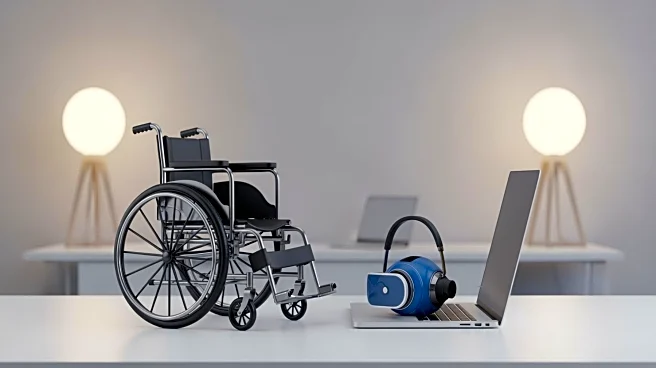What's Happening?
A recent paper delves into the socio-spatial aspects of hybrid work, emphasizing the role of architectural sociology in understanding the social functions of physical and digital spaces. The study highlights how hybrid work alters the relationship between
formal and informal organizational structures, making it challenging to establish informal relational work, particularly for new employees. The research draws from various disciplines, including human resources, architecture, and technology, to address the complexities of hybrid work. The COVID-19 pandemic has accelerated the shift towards hybrid work, revealing the need to consider workspaces through a socio-spatial lens.
Why It's Important?
The shift to hybrid work has significant implications for organizational productivity and employee well-being. By understanding the socio-spatial dynamics, organizations can better design work environments that foster collaboration and innovation. This approach can help mitigate the challenges of hybrid work, such as social isolation and reduced informal interactions, which are crucial for team cohesion and employee satisfaction. The insights from this research can guide organizations in creating more inclusive and effective hybrid work policies, ultimately enhancing employee engagement and productivity.
What's Next?
Organizations are expected to continue exploring the socio-spatial aspects of hybrid work to optimize their work environments. This may involve redesigning office spaces to better support hybrid work models and investing in digital tools that facilitate collaboration. As hybrid work becomes more prevalent, companies will need to address the challenges of maintaining organizational culture and employee well-being in a hybrid setting. Future research may focus on developing strategies to enhance informal interactions and support new employees in hybrid work environments.
Beyond the Headlines
The integration of architectural sociology into the study of hybrid work highlights the importance of interdisciplinary approaches in addressing complex workplace challenges. This perspective can lead to more holistic solutions that consider both the physical and social dimensions of workspaces. As organizations navigate the transition to hybrid work, they must balance the benefits of flexibility with the need for social connection and collaboration. This research underscores the potential for hybrid work to transform organizational structures and employee experiences.













